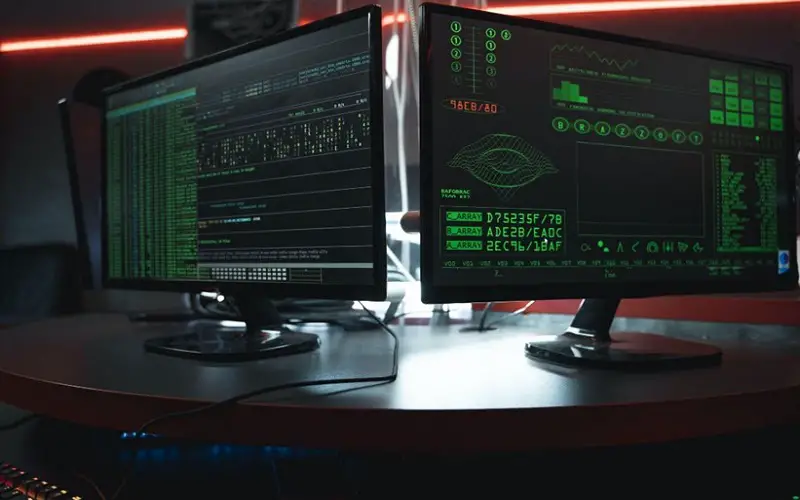In this digital landscape, when technology is rapidly advancing and becoming a more integral part of our everyday lives, the need for robust cybersecurity measures has never been more crucial. Both open-source and commercial tools play a critical role in shaping our technological ecosystem. But as their importance grows, so does the potential for cyber threats. In this post, we will talk about the importance of increasing the level of cybersecurity for open-source and commercial tools and the best strategies to enhance their protection effectively.
The Rising Significance of Cybersecurity
The 21st century has witnessed a profound digital transformation that has revolutionized all aspects of our lives. With innovations like cloud computing, smartphones, and the Internet of Things (IoT), technology has become a crucial part of our personal and professional lives. But with unprecedented convenience and efficiency, these innovations also introduced numerous vulnerabilities that cybercriminals can exploit. The global nature of the digital economy led to a significant increase in cybercrime, like data breaches, ransomware attacks, or identity theft. Successful cyber-attacks can lead to financial losses, reputational damage, and even a compromised critical infrastructure and national security. Today, not only various organizations and tech experts address the newest challenges posed by malicious actors, but even whole countries and their governments. For example, Switzerland (also known as Schweiz) has established comprehensive legal frameworks to combat cybercrime, offers specialized programs for cybersecurity training by government institutions, and founded well-known Competence Centres for Cybersecurity to support organizations in fortifying their defenses. In terms of cybersecurity Schweiz became one of the world leaders, with other countries striving to adopt its approach.
Understanding Open-source and Commercial Tools
There are two distinct paradigms in software development today: open-source and commercial tools. Both represent different approaches to creating, distributing, and maintaining software solutions. Understanding their key characteristics, advantages, and differences is absolutely essential for comprehending their implications for cybersecurity.
Open-Source Tools
The defining characteristic of this type of tools is their transparency: their open-source is open to inspection and modification by anyone who wishes to contribute. The main advantages of open-source solutions are transparency, increased developer accountability, flexibility, customization options, faster development cycles, rapid innovation, and reduced costs. Critical challenges of these tools are sometimes inadequate security oversight and lack of comprehensive security support.
Commercial Tools
These proprietary software solutions are developed by organizations with the intent to generate revenue, in contrast to open-source tools. Commercial tools are usually distributed under licensing agreements that strictly define how they can be used, modified, and distributed. Critical advantages of such solutions are a dedicated support team, advanced features, rigorous security testing, and structured licensing. Among the main challenges are high costs and limited customization capabilities.
Regarding cyber defense concerns, cybersecurity and auditing experts single out profound implications in both development models. Open-source tools significantly benefit from a larger pool of contributors identifying vulnerabilities, but the open nature of the source code can easily expose them to a broader range of security threats. Commercial solutions can seem more secure due to their proprietary nature and dedicated support, but a closed-sourced environment often hinders the identification of potential vulnerabilities and can delay incident response times.

Strategies to Fortify Cybersecurity
Both commercial and open-source tools require robust cybersecurity measures to ensure their integrity. So, let’s talk about the primary strategies employed by cybersecurity and auditing experts from all over the world.
- Regular Security Audits and Code Reviews. Routine security audits and comprehensive code reviews are fundamental for uncovering vulnerabilities in software solutions. The main focus of these measures is finding potential weak points in an organization’s infrastructure that can be exploited by malicious actors in the future. For open-source tools, the developers’ community can contribute to more thorough audits, while commercial ones require internal or third-party security experts.
- Timely Updates and Patch Management. The timely implementation of security updates and patches is crucial for effective cyber defense. Both open-source and commercial tools must actively address any potential vulnerabilities. Otherwise, users would be exposed to cyber threats, as malicious actors are known for targeting unpatched software.
- User Education. Empowering software users with knowledge about cybersecurity is vital for safeguarding against threats. Educating users about best practices like using strong and unique passwords, avoiding suspicious links, or enabling multi-factor authentication can significantly enhance the overall security posture of commercial and open-source tools.
- Multi-Factor Authentication (MFA). Multi-factor authentication requires users to provide several forms of verification and serves as a formidable barrier against basic cyber threats. Even in case of a compromised password, MFA provides an additional layer of defense, making it much more difficult for unauthorized individuals to access the tool.
- Threat Monitoring and Intrusion Detection. The implementation of advanced threat monitoring and intrusion detection systems allows organizations to identify any unusual or suspicious activities swiftly. Real-time alerts ensure prompt responses to potential threats, mitigating their impact and minimizing potential damage.
- Encryption and Data Protection. Robust encryption techniques are recommended for both open-source and commercial tools for safeguarding sensitive data. Encryption ensures that even in case of data being intercepted, it remains unintelligible to unauthorized parties, serving as a crucial line of cyber defense.
- Collaborative Security Efforts. Open-source projects can harness the power of collaboration by engaging with ethical hackers and security researchers. This approach ensures that any potential vulnerabilities are identified and reported for timely resolution. Commercial tools can initiate bug bounty programs, incentivizing independent experts to identify and report security flaws.
- Regular Backups and Disaster Recovery Plans. Implementing robust backup protocols and disaster recovery plans is essential for both commercial and open-source software solutions. In the event of a successful cyber attack, data loss, or system compromise, these measures can ensure that essential data can be swiftly restored and disruptions are minimized.
Final Thoughts
In a world driven by technology, the security of software solutions is crucial. By understanding the pros and cons of open-source and commercial tools, their differences, and implementing successful strategies recommended by cybersecurity experts, organizations can protect their users from the ever-evolving landscape of cyber threats.




